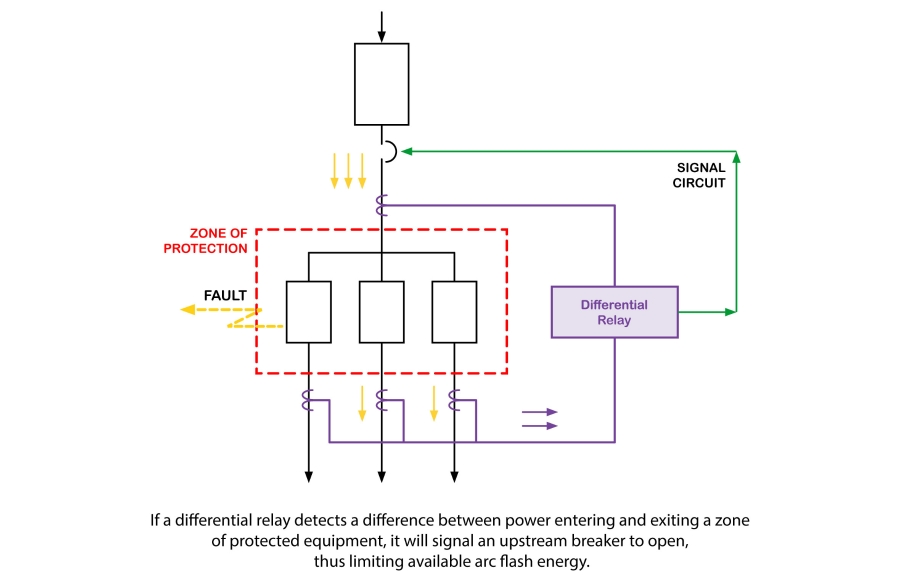Arc flashes result from arc faults, which occur when current passes through air from an energized conductor to a grounded conductive object. Arc flashes can instantly release enormous amounts of heat, pressure, and debris, which can injure people and damage property.
To mitigate the associated risks, the 2020 National Electrical Code® Article 240.87 – Methods to Reduce Clearing Time requires one of the following seven approaches when power is supplied through overcurrent protection devices rated 1200 Amps or more:
Zone-selective interlocking employs a signal circuit between the trip units of upstream and downstream circuit breakers. In this arrangement, the breaker closest to a downstream fault location will clear the fault with no intentional time delay and simultaneously send a trip delay signal to the next upstream breaker. This arrangement limits the amount of equipment taken off-line. If a fault occurs between the two breaker locations, the upstream breaker does not receive a delay signal, and thus clears the fault with no intentional time delay.
Differential relaying places current transformers upstream and downstream of a zone of protected equipment, which are connected to a differential relay. If the relay detects that the amount of current exiting the zone does not match the amount of current entering the zone, such as when faults occur in the protected zone, the relay signals the upstream breaker to open. This clears the fault and reduces the hazard.
To mitigate the associated risks, the 2020 National Electrical Code® Article 240.87 – Methods to Reduce Clearing Time requires one of the following seven approaches when power is supplied through overcurrent protection devices rated 1200 Amps or more:
- Zone-selective interlocking
- Differential relaying
- An energy-reducing active arc flash mitigation system
- An instantaneous trip setting that is less than the available arcing current
- An instantaneous override setting that is less than the available arcing current
- Energy-reducing maintenance switching with local status indicator
- An approved equivalent means
Zone-selective interlocking employs a signal circuit between the trip units of upstream and downstream circuit breakers. In this arrangement, the breaker closest to a downstream fault location will clear the fault with no intentional time delay and simultaneously send a trip delay signal to the next upstream breaker. This arrangement limits the amount of equipment taken off-line. If a fault occurs between the two breaker locations, the upstream breaker does not receive a delay signal, and thus clears the fault with no intentional time delay.
Differential relaying places current transformers upstream and downstream of a zone of protected equipment, which are connected to a differential relay. If the relay detects that the amount of current exiting the zone does not match the amount of current entering the zone, such as when faults occur in the protected zone, the relay signals the upstream breaker to open. This clears the fault and reduces the hazard.



